All About Cherry Grafting
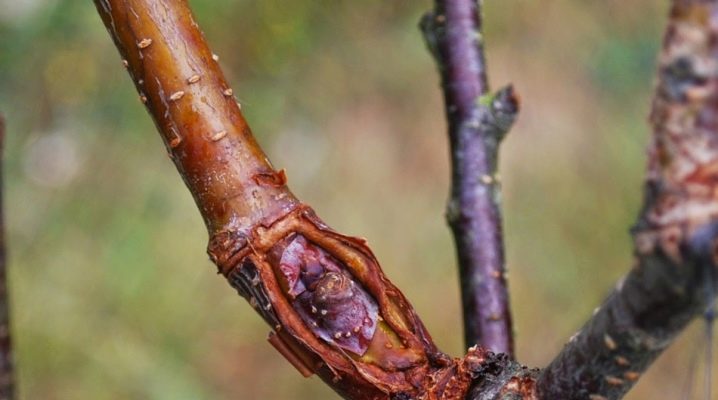
Grafted cherries have an increased vigor and developed root system, which is why the procedure is necessary for this fruit tree. However, in order to get the vaccine correctly, you need to study the process in more detail.

Timing
There are both advantages and disadvantages to grafting cherries. Among the advantages are:
- preservation of old, but very valuable varieties of cherries;
- getting strong, healthy and resistant plants;
- the ability to plant several varieties on one tree, so that soon it will be possible to diversify the assortment of trees;
- fast production of fruiting plants.
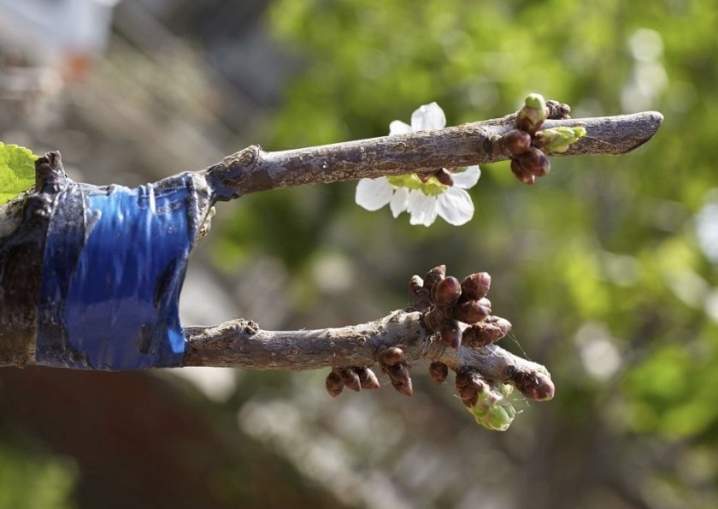
Labor intensity, as well as the possibility of the spread of viral diseases, should be considered as a disadvantage of vaccination.
It is necessary to plant cherries in early spring in March-April or in autumn in September. Summer in the Moscow region is the best time from July to August.
It is optimal when the spring procedure is carried out in cloudy daytime or on a warm, but not rainy evening.
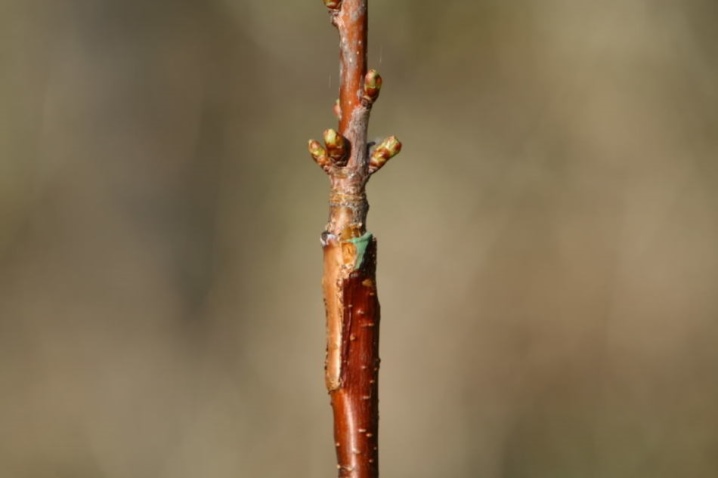
Trees should not be vaccinated during or after rain, no matter which month is chosen.
Preparation
Before vaccinating, you will need to prepare not only inventory, but also layering. Layers are the part of the plant that is intended for the procedure. They can take different forms, depending on which method of vaccination is chosen. Layers are taken from a mother plant that has the distinctive characteristics of the variety. When choosing, it is important to choose a shoot that is completely healthy.
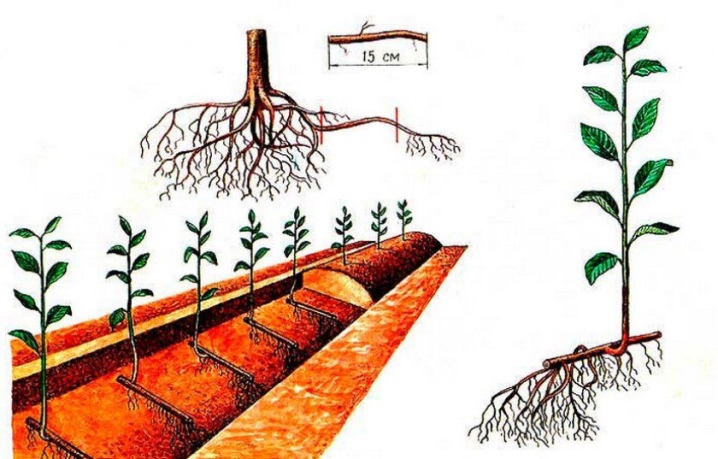
The result of the procedure will largely depend on how well the cuttings are prepared. Harvesting should start in the fall, before the time of the first frosts comes. It is imperative that the tree be dormant.
It is best to use annual shoots 400 mm long and about 5 mm in diameter as a grafting cuttings. You need to look to have 3 buds on the handle.
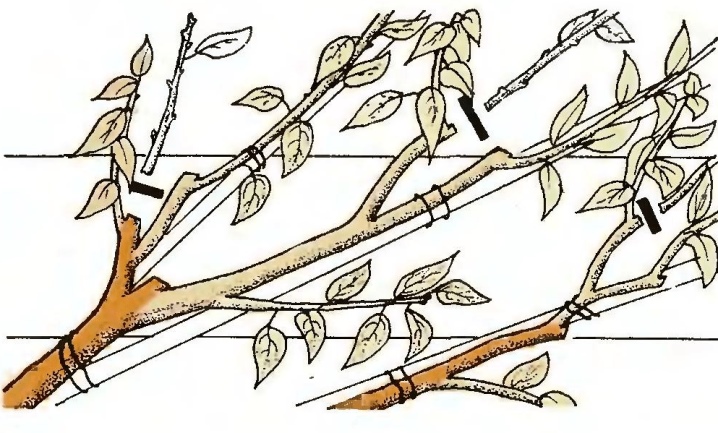
The cut shoots are placed in a bag and placed in the refrigerator, but not in the freezer. If there is too much material for grafting, then you can put it in a box with peat, sawdust and sand. The mixture is well moistened and during storage in it the cuttings are monitored so that it does not dry out. You can moisten with a spray bottle.
The drawer is removed in a cool place; the basement is ideal for this.
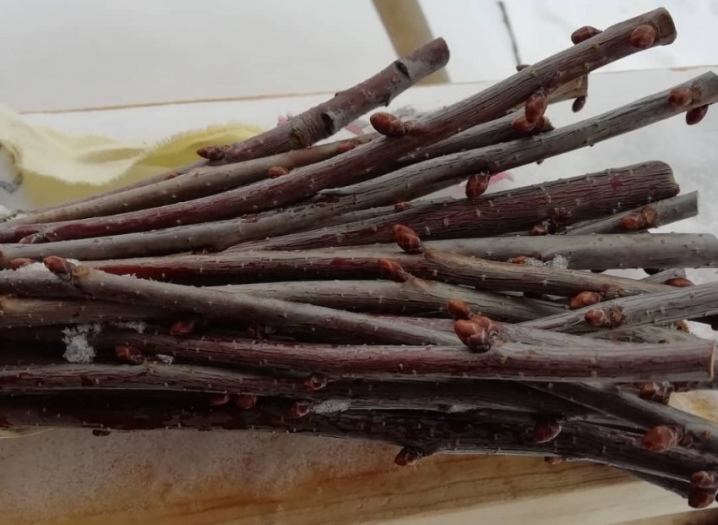
For the procedure, in addition to the scion and rootstock, you will need special equipment, namely:
- grafting secateurs;
- sharp garden knife;
- special tape;
- garden pitch;
- small saw.
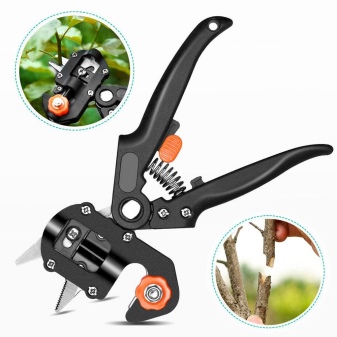

All instruments must be disinfected before use. A weak solution of manganese or regular bleach is ideal for this.
What can you vaccinate on?
If there is a desire to plant cherries, then experts recommend using a young tree for this. When a plant is grafted onto an old tree, the survival rate of such grafts is minimal and even with a successful operation, it will not be possible to get a rich harvest. In nurseries, stock selection is carefully carried out.
Young cherries are considered ideal, but they are also vaccinated for:
- plum;
- cherry plum;
- common bird cherry;
- turn;
- mountain ash.

When choosing cherries as a rootstock, you should pay attention to the flowering period. It must be the same. Wildlife is also a good fit, since there is practically no rejection of the cutting.
Frost-resistant bird cherry is a good option. The main advantage when using this tree is that you can get a rich harvest even in the northern region of the country.
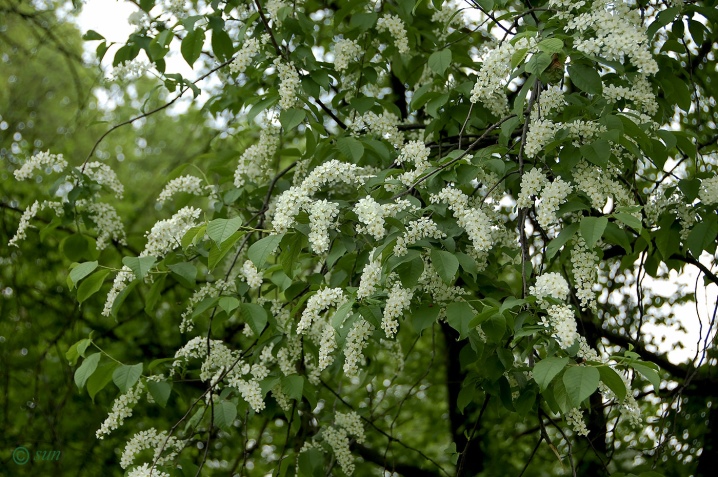
A plum is considered a strong rootstock, because this fruit tree accepts cherry cuttings well. A tree grown on a plum has a good immunity to diseases and resistance to an unfavorable environment. In principle, there are no shortcomings at all.
You can be vaccinated on cherry plum. This tree is a versatile rootstock that increases resistance to stone fruit diseases.

If the vaccination procedure is not successful the first time, you can try it in the fall or summer.
Vaccination methods
There are several ways you can get vaccinated. Some are ideal for beginner gardeners, as long as you get it right.

On the bark
It is recommended to vaccinate on the bark in the spring, because then the bark is easily separated. This method is ideal when the rootstock and scion diameters differ slightly.
If the rootstock is small in diameter, usually only one cutting is grafted. If this parameter is wider, then up to 4 pieces can be used.
The step-by-step process is as follows:
- first prepare the cuttings;
- the base is cut to make a cross-section;
- on the rootstock, the site for grafting is cut off with a hacksaw, must be cleaned;
- cuts are made on the stump, the length of which is up to 5 cm;
- it is required to install cuttings in the resulting cracks so that they fit snugly to the wood;
- at the final stage, the grafting site is tied up with a grafting tape and smeared with garden varnish.

Into the cleft
When the rootstock is more than 100 mm thick and the scion is up to 2 cm, it is best to inoculate in the split.
The procedure should be performed as follows:
- the stem of the stock is cut in such a way that a stump with a height of no more than half a meter remains from the ground;
- if there are strong shoots on the tree, you can remove not the trunk, but one of them;
- the stock will need to be split into two parts, depth - 30 mm;
- on the cutting, when cutting, a sharp end should be obtained, the length of which is three times the length of the scion;
- it is imperative that the scion contains from 2 buds;
- the upper cut point is necessarily processed with garden pitch;
- the cutting is placed in the scion so that it fits snugly against the wood;
- the grafting is tied with a special tape and a garden var is applied.

Into the semi-cleavage
Of all the available methods of grafting cherries, there is the most painless - half-cleavage. In this case, we are talking about a slight splitting of the shoot for laying the cuttings. But you should use this method only when you have already managed to master the grafting of cherries into the split.
The gardener must be especially careful, since the survival of the cuttings in the future depends on his manipulations. The procedure looks like this:
- using a garden saw, the stock is cut down;
- with a hatchet or a garden knife, they make a splitting with a depth of 3 cm;
- the handle is placed in the resulting hole;
- tape fix the position of the handle.

With this method of grafting, the garden pitch is not superimposed, since it is not necessary.
Copulation
This method of grafting is used if the scion and rootstock are of the same diameter. The procedure is performed as follows:
- on the stock it is necessary to cut at an angle of 30 degrees;
- the stalk is prepared in the same way;
- applied to one another and fixed with garden tape, you can use ordinary electrical tape;
- everything is smeared with garden pitch.

The more precisely both parts are combined, the better the survival rate of the vaccine.
Budding
As mentioned earlier, cherry budding begins at the end of July. On the tree, you need to choose strong, adult layers located on the outside, clean them of leaves.
It is best to prepare the material immediately before the procedure, but if this is not possible, you can wrap them in wet material and hold them for several days in a cool, shady place (no more than 2-3 days).
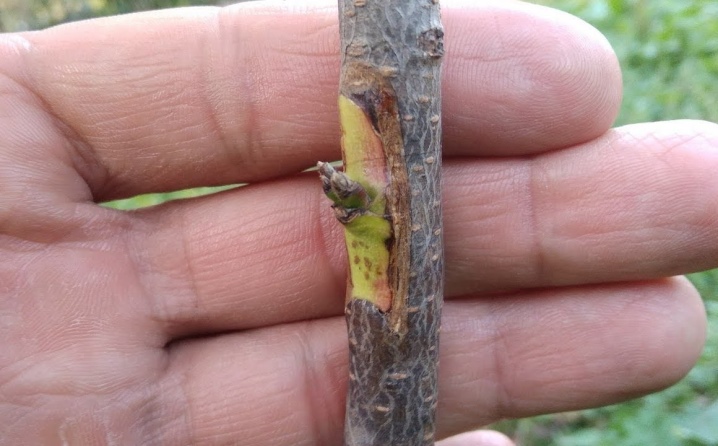
The most commonly used type of budding is the letter T. Before starting the operation, lateral shoots are removed from the lower part of the trunk and the bark is carefully cleaned with a napkin, removing dirt from it. Then cut the bark with a sharp knife so that the letter T is formed.
The incision in the horizontal plane is 2 cm, in the vertical one - 3-4 cm, it is made at a height of 10 cm above the ground. After the incision is made, the bark is gently pushed back so that the stalk can enter into it. The inoculation is wrapped in a special material. The effect of a successful procedure should be visible after 15-20 days. If everything went well, the tail of the vaccination will be yellow.
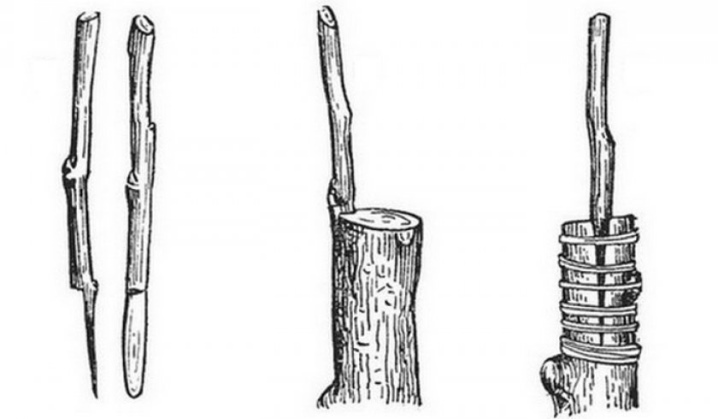
By the bridge
This technique is used when the tree is damaged. To save the plant, it is better to use young shoots, which form an additional path for sap flow.
The procedure is as follows:
- clean the damaged area;
- below and above the damage, cuts are made with a knife, forming a kind of pockets;
- make an oblique cut on the handle, all of them should be 2;
- length of the handle - from the upper to the lower incision;
- escapes are placed in the pockets and secured with tape.
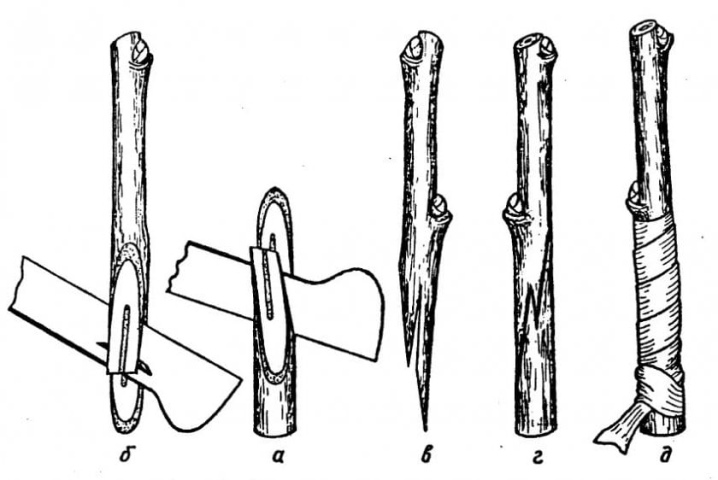
Follow-up care
Only after a few months it will be possible to understand how successful the vaccination procedure was. With a good result, several buds should form on the shoot, from which leaves will subsequently grow.
For such a cherry, follow-up care is also required, which is not limited to spraying against diseases and insects and watering. It is better to put a tire on the branch where the graft was made, then it will be more resistant to wind.

The film or tape with which the junction of the scion and rootstock was tightened is not removed even the next year. Only after 3-4 years can the mount be removed.
After grafting into the ground near the trunk, it is worth adding top dressing. In the first period, the plant desperately needs potassium, phosphorus and nitrogen.
Every spring, the tree is sprayed with Bordeaux liquid, copper sulfate, or commercial fungicides and insecticides are used. Processing is carried out several times per season, the first time - at the beginning of the appearance of the buds. Then before flowering and at the time of flowering.
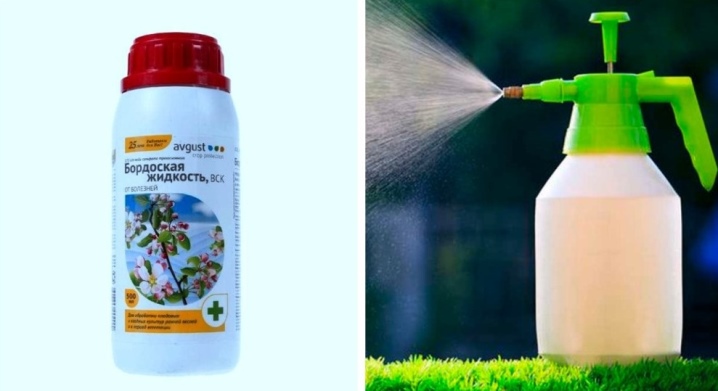













The comment was sent successfully.